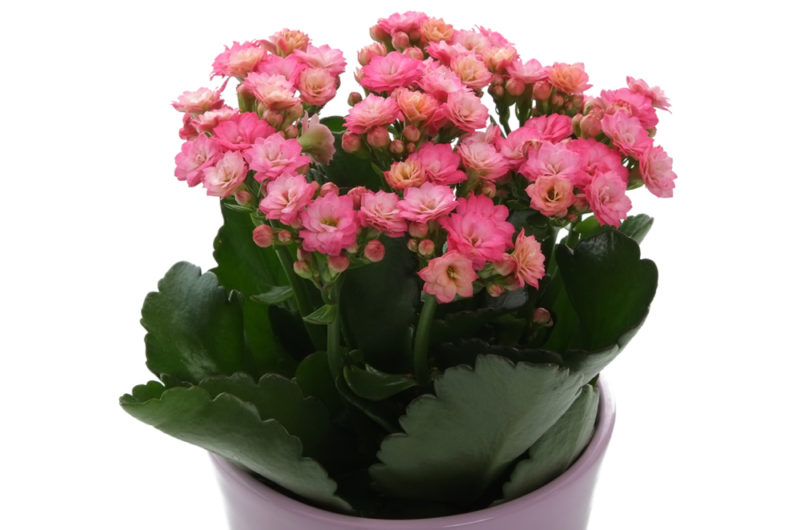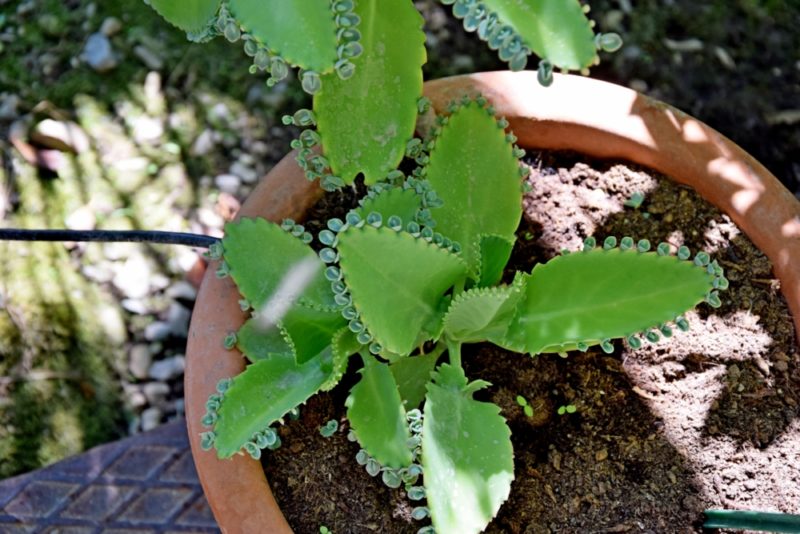Those who do not yet have this flower in their collection should definitely buy it. How to care for Kalanchoe can be easily explained even to a child, because this is a very unpretentious plant. And yet, it is very useful and can replace many medicines in a home medicine cabinet. Some cultivars bloom beautifully and continuously.
Material Content:
Description and features of Kalanchoe
"Kalanchoe" in translation means "fat." The plant belongs to the genus Crassulaceae, its leaves are succulent, storing moisture. The ability to heal ailments and beautiful flowering make this indoor flower popular. In traditional medicine, the anti-inflammatory properties of the plant are familiar, it is able to disinfect cuts and injuries, strengthen immunity, and alleviate the condition with gastritis and hypertension.
To one degree or another, all kinds of culture are endowed with healing power, but they use mainly Kalanchoe Briofillum and Degremon.
Leaf plates of individual varieties are distinguished by a unique color and shape, sometimes completely dissimilar to each other. The similarity is manifested in the same requirements for care - photophobia and tolerance to dry soil. To maintain beautiful flowering, nutrition is needed.
Popular types and varieties
The most popular among flower growers are Kalanchoe of Blosfeld and Degremon. In total, about 200 natural varieties are known, and about 10 are cultivated under indoor conditions.
Description of decorative types:
- Kalanchoe dissected. Shoots are erect or ampelous, leaf plates are carved, dense, they are popularly called "deer horns." Canary yellow small corollas are collected in umbrella inflorescences.
- Kalanchoe Boveri.Leaf plates up to 5 cm in length and 0.5 cm in width of green color, in the sun acquire a wine shade. Shoots up to 1 m in ampel shape. The flowers are lilac.
- Kalanchoe Mangin. Small ovoid leaves on short petioles. Orange-red, drooping bell-shaped corollas grow on high pedicels.
- Kalanchoe felt. Hairy leaf plates with a silver tint and a brown stripe along the edge. Leaves without stalks, dentate or whole. White flowers are collected in spike-shaped inflorescences.
- Kalanchoe Blosfelda. The bush is about 30 cm high with rounded, curving sheet plates. Small flowers of bright red color are collected in umbrella inflorescences, bloom all spring.
- Kalanchoe Degremon. Stems with a height of 50 to 70 cm, do not branch. Oblong triangular leaves about 20 cm long, grayish-green in color, with a serrated edge, form brood buds along the edge. Corollas pink in inflorescence panicle, bloom in winter.
- Kalanchoe Kalandiva. Varietal variety of Kalanchoe Blosfeld, has very beautiful terry flowers of various colors. It blooms profusely and continuously.
- Briofillum Dense leaves are opposite 3 in the whorl, in the sun they turn pink. On each clove of the leaf blade there is a brood bud - this is a daughter plant that takes root as soon as it enters the ground. It is believed that the flower has the maximum healing effect when it has brood buds. Kalanchoe Degremon has the same brood buds.
All types of plants require approximately the same conditions of detention. Blooming Kalanchoe Kalandiva is especially appreciated for its decorative effect. Its double flowers can re-bloom throughout the year with special care.
How to care for a plant to bloom
A flower pot needs to be placed in a bright place in the apartment. In winter, even the southern windows are well suited. In shading, flowers do not grow; leaves become small. In summer, it is better to keep Kalanchoe on the western or eastern window, where there will be bright sun only in the morning or in the evening.
The frequency of soil moisture depends on the room temperature and humidity. The colder the less water should be watered.
- Watering. The plant perfectly tolerates a lack of moisture and quickly dies with its excess. Watering is necessary when the topsoil dries to 2 phalanges of the index finger.
- Spraying. Kalanchoe does not need spraying, you can wipe the dust from the leaves with a damp sponge. If along the edge of the leaf plates there are brood buds, the dust is washed off from the spray gun, trying not to get on the buds and flowers.
- Top dressing. Fertilizers for succulents and cacti. During flowering, it is advisable to apply fertilizer every week in half the dose recommended by the manufacturer. In spring and summer, during active vegetation, the frequency of top dressing should be 1 - 2 times a month.
- Cuttings. The plant can be rejuvenated by pinching the tops, and immediately plant cuttings in the ground. It is not necessary to cover the cuttings, they are perfectly rooted in moist, fertile soil. An adult plant is transplanted once every 2 years, in the summer it is taken out to the balcony, it is not afraid of temperature changes.
To understand how to make Kalanchoe bloom, you need to know its features. This plant is a short daylight, in industrial greenhouses stimulate flowering, reducing the lighting time to 8 - 10 hours. At 17 o’clock in the evening, the flower is put into a box and put in a closet or covered with an opaque plastic bucket. In the morning they get a flower into the light. This continues to be done for at least 4 weeks until the buds appear. If the plant is not covered, flowering will begin around February and end in May.
Breeding methods
Kalanchoe propagates at home vegetatively with the help of apical cuttings and brood buds. This process does not require the creation of special conditions for rooting.Cuttings are cut off when the stems are very long and bare, which often happens in winter with insufficient lighting.
For planting, use universal soil from the store, mixing it with river sand or vermiculite, soil for cacti is also suitable. Cuttings immediately after cutting are stuck in moist ground, put in a warm place with diffused light. So that fresh slices do not rot, it is advisable to treat them with charcoal powder. As the soil dries, moisten the cuttings from the spray gun. After 2 weeks, Kalanchoe is safely rooted.
Rules for care after flowering
Wilted flower stalks cut and set plants from the sunny windowsill in a shaded place. Keep at a cool temperature (about +10 degrees), do not water for a month.
Then they again put Kalanchoe on the window in the heat, after which young shoots begin to grow. Fertilize the plant 1 time in 2 weeks, watering is carried out as the soil dries. To start flowering, you need a short daylight hours for a month.
Pest and Disease Control
The plant may suffer due to improper care and pests. Most often, in the Kalanchoe in the pot, the root system rots due to excessive watering. On the leaves, a spider mite, mealybug, thrips, scabies can parasitize.
Having noticed pests, they are removed with a cotton swab dipped in salicylic alcohol.
If the infection is severe, a double spraying with Fitoverm insect aacaricide is carried out with an interval of 5 days. When decaying the root, you can save the flower only by cutting off the top, and rooted in a fresh soil substrate.
Growing Kalanchoe on your own is easy. The juice of the plant is healing, and the flowers are beautiful. It is nice to receive such an interesting plant as a gift, and then give it to everyone you know, propagating by cuttings or brood buds.

















